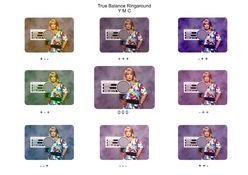Ok then, see you in a couple of years. ;-)
You don't say what tools you will be using to scan these negatives: film scanner, flatbed scanner, or a digital camera?
I use NLP (Negative Lab Pro), mostly for B&W, but I've also scanned and inverted about a dozen rolls of color negative film. For me, my black and white negatives are less of a struggle in NLP, and a lot more fun.
If you can get either Silverfast or Vuescan to invert your color negatives in a way that is pleasing to you, then by all means do that. If not, NLP might be a big help, but it might not. My experience with NLP is rather limited, so perhaps I shouldn't say, but so far my results have been somewhat uneven. On some days, I am able to make positive inversions I really like, and other days, it's a struggle.
A recent upgrade to NLP has added something the developer calls Roll Analysis, and I think it helps, especially if a roll of color negatives has multiple shots made under similar lighting. Still, NLP is far from a one-button solution. I am happy when I can find a set of NLP settings that gets me to 80-90% of where I want to be -- after which I expect to convert the NLP results to a positive copy so I can finish the job using the normal Lightroom Classic tools. Sometimes, I find a group of NLP settings that works pretty good for multiple negatives. Other times, it seems like every negative requires its own custom NLP settings.
No matter what tools you use, I suspect it is going to take some minimum amount of time and effort to get acceptable results from color negatives, so my advice is to be selective, and be patient.
There are several other software applications which have been released in the past few years, but I have not tried them. If there is something quicker, easier and more predictable than NLP, I would like to hear about it.


 I appreciate your comments about NLP, and about the Roll Analysis feature specifically.
I appreciate your comments about NLP, and about the Roll Analysis feature specifically.









